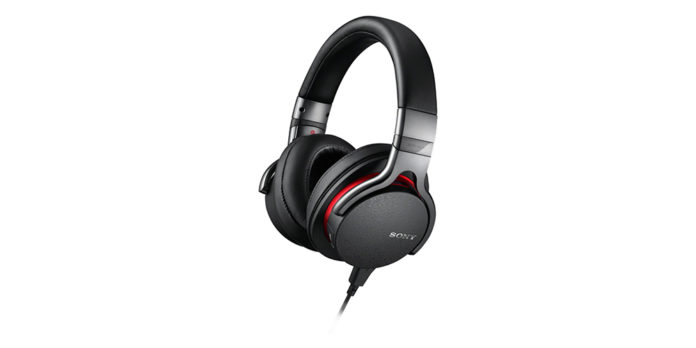I often have a habit of writing Sony headphones off as old, boring headphones. Maybe because Sony’s monitors have been around since Jesus was a Cub Scout, or maybe because Sony’s offerings get overshadowed by those from other manufacturers. Well, the $289 Sony MDR-1a just landed on my desk. By no means a new headphone, I’m curious how well it will stack up against other models in the $250-$300 price range.
Sony MDR-1a Review

The MDR-1a comes in a big box with a heavy-duty zippered soft case. Inside the case are two 4 ft (1.2 m) audio cables – one with a mic and remote, and one that just plays audio.
Build-wise, it’s a light headphone that still manages to feel solid. Comfort is decent, though the headband could be a tad bit wider. Ample pleather padding on the earcups does add to both comfort and isolation, though.
Specs
DYNAMIC TYPE: Yes
CIRCUMAURAL TYPE: Yes
DRIVER UNIT: 1.57 in dynamic – Dome type
FREQUENCY RESPONSE (HZ): 3-100000 Hz
SENSITIVITIES (DB/MW): 105 dB/mW
MAGNET: Neodymium
IMPEDANCE (OHM): 48Ω
CORD TYPE: Detachable
CORD LENGTH: 3.94 ft
PLUG: Gold-plated L-shaped stereo mini
From the specs, we can see a huge frequency range, a relatively low nominal impedance, and a decent sensitivity – in theory translating to more detail, the ability to play from portable devices, and a fairly standard level of volume, respectively.
Low End
In the low end, the MDR-1a distinguishes itself with strong detail that remains under control with just a shade of muddled sound in there. Bass is robust, with impact. Not the best for certain classical music tracks, but more than welcome for my rock, metal, and hip hop tastes.
Mids
When it comes to the mids, I can get an impression of detail. Not as detailed as it could be, but still competitive. Vocals are, for the most part, spot on.
High End
Here you’ll see a huge jump in performance. The high end is just the slightest bit rolled off – it might be lacking the smallest amount of detail, but only in the highest high notes. On the other side of the coin, notes don’t get piercing.
Soundstage
Perhaps the only real failing of the MDR-1a is the lacking soundstage. It’s present on complex recordings with decent instrumentation, but overall placement is cramped and does not give a good sense of spacing and depth among competing instruments.
Sony MDR-1a vs Audio Technica MSR7
When first unboxing the MDR-1a, I was astonished by how much it resembles the Audio Technica ATH-MSR7. Despite similarities in build and price ($289 for the MDR-1a vs $249 for the MSR7), they also offer a similar sound – with some key differences. While the MSR7 might offer some more mid-range detail and a greater sense of soundstage, the MDR-1a has deeper, impacting bass and a less-piercing high end.
Overall Impressions
The MDR-1a is a strong performer. While it might suffer a lack of soundstage, it offers an impressive low end and a good high end. Add to the sound a lightweight build and a mic-and-remote cable and here you have a headphone that will easily impress casual listeners and beginner audiophiles alike.
Recommendations
If you’re after soundstage and midrange detail, other headphones might provide a better sound. At $289, though, the MDR-1a strikes that keen balance between dynamic sound and overall detail that will impress a lot of listeners. If you’re looking for a warm low end, a slightly relaxed high end, and some articulation in between, look no further – you’ve found your headphone.

Compare the ranking of various headphones, earbuds and in-ear monitors using our tools.
Discuss this, and much more, over on our forum.
---MAJORHIFI may receive commissions from retail offers.















